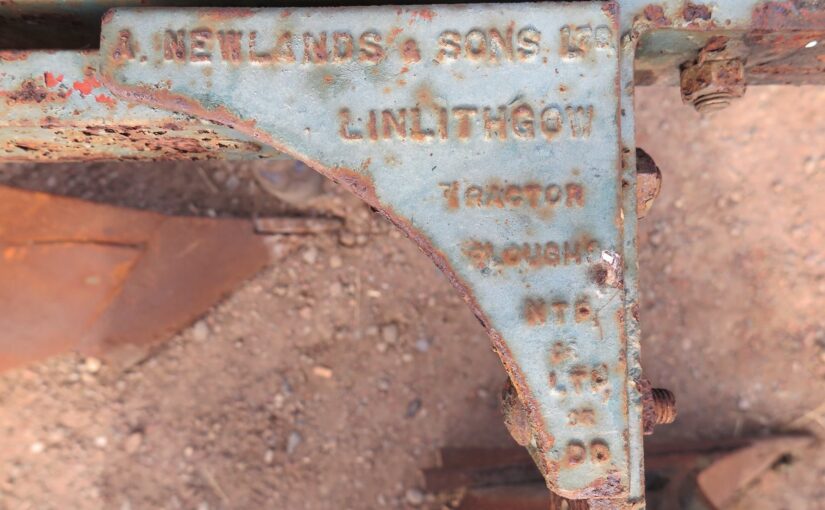N is for …
Alexander Newlands & Sons (ploughs, grubbers and harrows), Edinburgh Road, Linlithgow, West Lothian
Eric Nicholson & Co. Ltd, Port Street, Annan, Dumfriesshire
James Nicol, 18 Catherine Street, Aberdeen
John Nicol (ploughs and reapers), Church Hill, Auchinleck, Ayrshire
The Northern Agricultural Implement & Foundry Co. Ltd (turnip sowers & rollers), Rose Street, Inverness
We have a small list under “N” but we have some great names.
Eric Nicholson & Co. Ltd, Port Street, Annan, Dumfriesshire was only in operation for a small number of years, but made an important contribution to the making and sale of oil engines. The company was recorded as Eric Nicholson, Port Street, Annan, in 1905. In order to move forward in its business it became a company limited by guarantee in 1909. Its trades were as a cycle maker and agent, a mechanical engineer, a millwright and an oil engine manufacturer. In the few years that it operated it brought its manufactures to the Scottish farmers in both the North British Agriculturist and The Scottish Farmer. It also exhibited at the Highland Show at Stirling in 1909 and at Dumfries in 1910. By the early twentieth century the use of oil engines had grown significantly in Scotland. In 1909 one of the makers, Eric Nicholson of Annan, who manufactured the Annan Oil Engine, commented: “it is well known that oil engines are popular, and in constant demand everywhere-a demand which is becoming greater as the benefits derived from their use are becoming known to the public-and the uses which they are put to being added from time to time.” He also noted “oil engines, have, in many instances, replaced steam engines, and possess many features, such as efficiency, economy, simplicity, portability, and cleanliness, which render them of great value, particularly to farmers; and there is every reason to believe that they will, in the future, be used much more extensively on the land.”
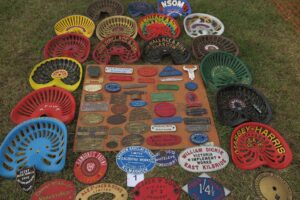
Nicholson was aware that by comparison to other makers, there were a “limited number of makers of oil engines, compared with the number of manufacturers of other classes of machinery.” He took the opportunity to capitalise on this demand and formed Eric Nicholson Ltd, of Annan. It made the Annan engines, which were sold throughout Scotland by other implement and machine makers such as D. H. & F. Reid, Ayr, and Robert G. Garvie, Aberdeen. Both were noted oil engine makers.
After the company was voluntarily wound up, the goodwill of the oil engine and thrashing machine manufacturing business was acquired by D. H. & F. Reid, engineers, Ayr. The business had been removed to Ayr where the Annan oil engines and thrashing machines were being made at their works at Victoria Bridge, Ayr.
The Northern Agricultural Implement & Foundry Co. Ltd, (Thomas B. Pegler, manager), was located at 6 to 12 Rose Street, Inverness in 1894. It undertook a number of trades including agricultural implement maker, brassfounders, engineers, millwrights, smiths, bridge builders and bellhangers, ironfounder, and mechanical engineers.
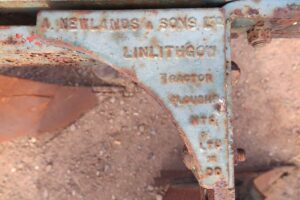
In 1919 the North British Agriculturist included a short article on the company:
“Manufacturing in the north
The Rose Street Foundry and Engineering Company (Ltd), Rose Street, Inverness, have been prominent for many years as manufacturers of agricultural implements as well as engineers and founders. They are now going to devote their energies in an increased degree to the farm implement side of their large and varied business. As the chief step in this direction, they have appointed Mr Malcolm Currie, so of the late Mr M. Currie, at one time manager to Lord Cawdor, to be manager of their agricultural engineering department. Mr Currie has a very wide experience, having been brought up to practical agriculture. Thereafter he served his apprenticeship under the late Mr Sinclair Scott of Greenock, to engineering, and subsequently he help important appointments with various firms engaged in marine and mechanical engineering. He is also a capable designer and draughtsman of several years’ standing, as well as having been for several sessions a lecturer in engineering design under the Royal Technical College, of which institution he was a distinguished student. He is also an associate member of the institute of naval architects. The foregoing qualifications, combined with business ability and energy, will be invaluable to a business such as that carried on by the Inverness firm.”
If you were attending the Highland Show in Inverness in 1923 and 1932 you would have seen the company exhibiting its manufactures. In 1923 they included an improved land roller.
Many readers will know the name of Newlands. Alexander Newlands was born in 1834. He spent his early years working for George Sellar & Son, Huntly, “with whom he has had great experience” in general country work – “plough and other Agricultural Implement Making, and Horse-Shoeing”. In June 1860 he took over the stock in trade of William Crichton, blacksmith, Port Elphinstone. But he did not stay in Port Elphinstone for long. By 1864 he had moved to Inverurie where he had set up shop at 43 High Street.
1868 was an important year for Alexander Newlands: it was the first one that he exhibited at the Highland Show which was being held in Aberdeen. He exhibited a two horse plough with steel mould and a ridging or drill plough, both of which he made himself.
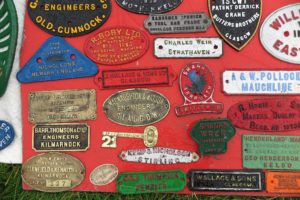
Alexander was an ambitious and successful plough maker. He recognised that while there was a trade for his implements in the north-east, he could expand his business elsewhere. On 11 September 1880 he sold, by public sale, the property at 43 High Street. He took the ambitious step of moving to Linlithgow, the county town of West Lothian, to expand his business. In 1884 his son, also named Alexander, joined him in business, which became Alexander Newlands & Son, Provost Road, Linlithgow. The name of St Magdalene Engineering Works, is not recorded until around 1913.
From the 1880s onwards Alexander Newlands & Son specialised in the making of ploughs, grubbers and harrows. Later it ventured into horse rakes. In 1900 its manufactures included a two horse swing plough; medium drill plough with marker; baulking drill plough; combined drill and potato plough; one horse drill grubber; horse or drill hoe as a drill grubber; house or drill hoe as a ridging up plough; field grubber; diamond harrows; and drill scarifier.
The company was a progressive one. From 1884 when the young Alexander joined his father, it exhibited nearly every year at the Highland Show and advertised in the agricultural newspaper of the day, the North British Agriculturist. In later years advertising was also under taken in The Scottish Farmer.

Even after Alexander senior died in 1907 the company continued to be an innovative one. By 1914, it acted as an agent for McCormick and Bamford, and in 1919 was selling the Austin farm tractor. In the following year it became an incorporated company: Alexander Newlands & Sons Ltd. Two years later in 1922, it took the important step to participate in the famous exhibition of farm tractors and tractor implements arranged by the Royal Highland and Agricultural Society of Scotland. In that year it also won a silver medal for its self-lift brake harrow at the Highland Show at Dumfries. In 1934 it exhibited as a new implement a cultivator and ridging attachment for tractors.
It was its ploughs that Newlands continued to be closely associated. In the 1950s and 1960s they couldn’t be beaten in the ploughing matches in the Lothians. Newlands carried away the prizes. Even the followers of Ransomes turned to Newlands.
Newlands built new works ain Linlithgow in 1912. Work had started on the new works in August 1912. The Linlithgowshire gazette recorded that:
“Messrs A. Newlands and Sons, engineers and agricultural implement makers, have now had a beginning made with the erection of their new works at St Magdalene’s. The site seems a desirable one, being in convenient proximity to the main line of the N.B. Railway, and also the public highway. The new premises will be more extensive than those formerly occupied by Messrs Newlands, and, as may be expected more up-to-date, to permit of business development in the respective departments. Already good progress has been made with the construction of the new buildings. As we have previously stated, the ground formerly occupied by Messrs Newlands is to be taken over by Nobel’s Explosive Co. Ltd, and will, in due course, be utilised as a pertinent of the Regent Factory. At present a retaining wall is being erected, and a large tank constructed within the ground for the storage of water for the works.”
By October that year the Linlithgowshire gazette provided a further update on the building works. It noted:
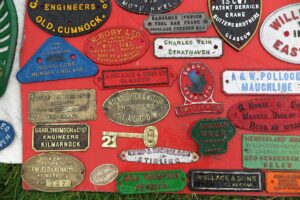
“The new works which are being erected at Linlithgow by Messrs Alexander Newlines and Son, the well-known agricultural implement makers and engineers, are now approaching completion. The works, which will occupy a considerable portion of ground, are situated in the vicinity of St Magdalane’s. Besides the implement and engineering departments there will be, we understand, a large garage in connection with the works. A new road has been formed by the proprietors leading from the works to the public highway, and it is anticipated that railway siding accommodation will also be provided. It may be expected more up-to-date, to permit of business development in the respective departments. Already good progress has been made with the construction of the new buildings. As we have previously stated, the ground formerly occupied by Messrs Newlands is to be taken over by Nobels’ Explosive Co. Ltd, and will, in due course, be utilised as a pertinent of the Regent Factory. At present a retaining wall is being erected, and a large tank constructed within the ground for the storage of water for the works.”
Alexander Newlands & Sons Limited continued in business until 9 September 1986 when the company was dissolved.
